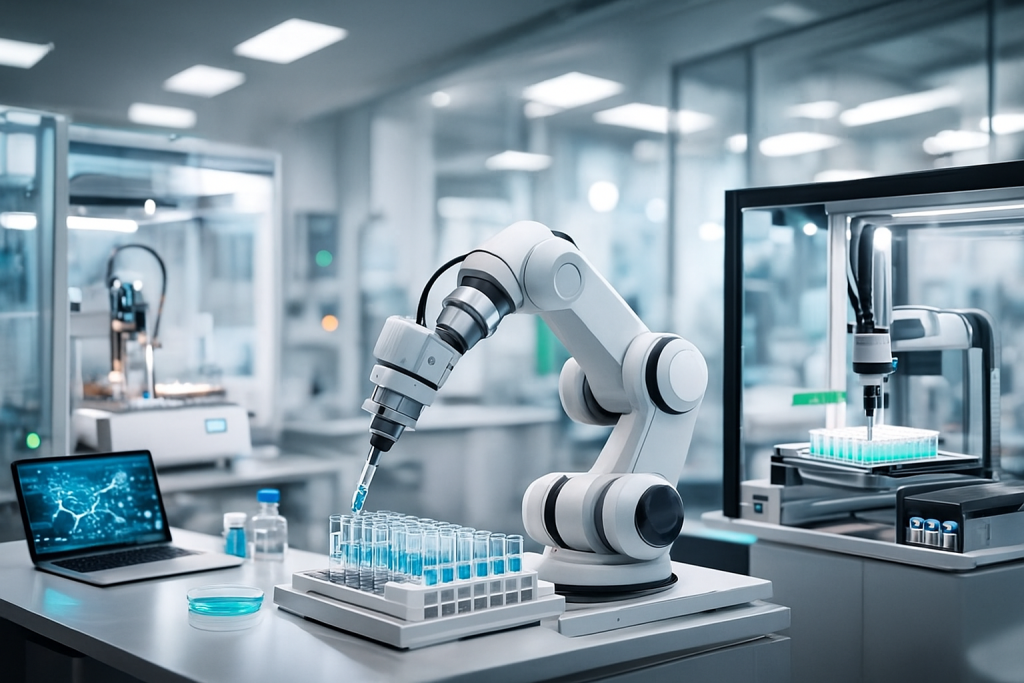Walk into a modern research lab today and it might look less like a bustling hub of scientists in white coats and more like a quiet symphony of robotics, sensors, and screens. Automation isn’t replacing scientists; it’s reordering how they think and work. The repetitive pipetting, tedious plate transfers, and unpredictable human errors that used to slow experiments are now handled by machines that never tire, complain, or sneeze into a sample. For researchers, this shift isn’t about losing control—it’s about gaining clarity.
Every hour that automation saves becomes time researchers can spend interpreting data, refining hypotheses, and chasing discoveries that used to take months. A task that once required long hours at the bench might now be programmed, monitored remotely, and completed overnight. This isn’t sci-fi. It’s the new standard in many leading facilities across the world.
Human Ingenuity in the Age of Machines
Critics once worried automation would make scientists lazy or replace their intuition with code. What’s actually happened is more interesting. Researchers are learning to design experiments that machines can execute precisely, then adapt them in real time based on data feedback. The art of experimentation hasn’t disappeared; it’s evolved.
Automation frees scientists from the grind of repetition, which means they can focus on creative problem-solving. In many cases, the collaboration between human judgment and robotic precision produces better results than either could achieve alone. It’s not just about running more experiments; it’s about running smarter ones. That partnership between intellect and instrument is quietly redrawing what it means to conduct research.
A Shift in How We See Proteins
Nowhere is this clearer than in the growing sophistication of protein studies. Proteomics (the study of entire protein sets within organisms) depends on how cleanly and consistently samples are prepared. Scientists using a protein microscope to prepare for mass spec analysis have discovered that automated preparation dramatically improves accuracy. Machines don’t get fatigued or distracted, and that consistency translates into purer results and better downstream data.
The implications ripple through biochemistry and drug discovery. Instead of struggling with sample variability, scientists can now rely on automation to generate standardized inputs for mass spectrometry, giving them cleaner, faster insights into how proteins behave. This precision doesn’t sterilize science; it amplifies it. It’s like swapping a flashlight for a laser beam.
Building Faster Pathways from Genes to Discoveries
Automation also reshapes how biology is assembled at the genetic level. With gene synthesis and other DNA assembly tools integrated into automated workflows, scientists can build sequences faster than ever before. What used to take weeks now happens in days or even hours.
This acceleration isn’t just about speed for speed’s sake. It allows researchers to test multiple genetic configurations in parallel, increasing the odds of finding meaningful patterns. That kind of rapid iteration was nearly impossible before automation entered the picture. And as sequencing costs continue to drop, labs can afford to explore new frontiers that were once budget-breaking. It’s a quiet revolution—steady, technical, and profoundly human in its curiosity.
Collaboration Without Borders
The real magic of automation happens when labs connect their systems across institutions and time zones. A researcher in Boston can design an experiment that runs overnight in Singapore. The data returns before morning coffee. It’s collaboration without borders, powered by automation but driven by human inquiry.
This interconnectivity is changing the economics of science too. Smaller labs that could never afford large teams or equipment can now outsource processes to automated facilities. The democratization of research has begun to level the playing field, allowing ideas to determine who makes the next big discovery.
The New Definition of Discovery
Discovery used to depend on endurance: who could stay longest in the lab, who could run the most trials by hand. Now, it’s about precision, reproducibility, and design thinking. Automation doesn’t make science easier; it makes it cleaner. It eliminates noise, human error, and unnecessary repetition so that the next breakthrough can emerge from sharper data and clearer insight.
Yet it still takes imagination to ask the right questions. Machines can execute instructions flawlessly, but they can’t dream up the next experiment. That remains the human domain, the place where curiosity and logic meet to push boundaries forward.
The quiet rise of lab automation isn’t stripping science of its humanity—it’s reinforcing it. By handling what’s mechanical, it lets researchers be more inventive, reflective, and daring. Every breakthrough built on automated precision still begins the same way: with someone wondering what’s possible. And in that moment of curiosity, the scientist and the machine are perfectly aligned, both chasing the same thing, the next discovery worth waking up for.

